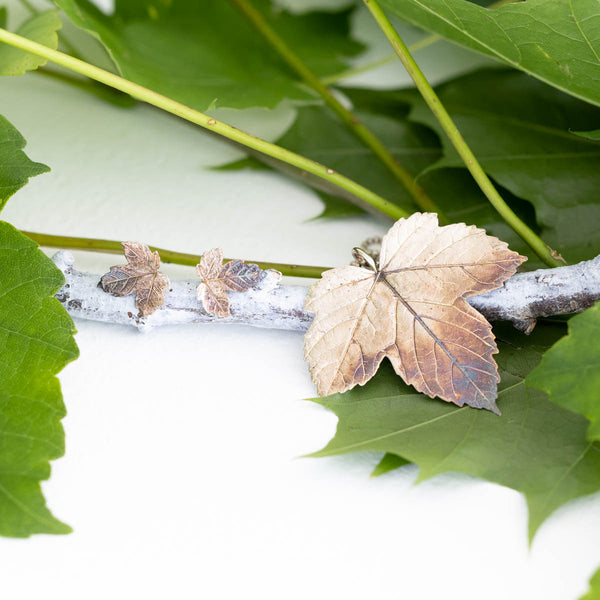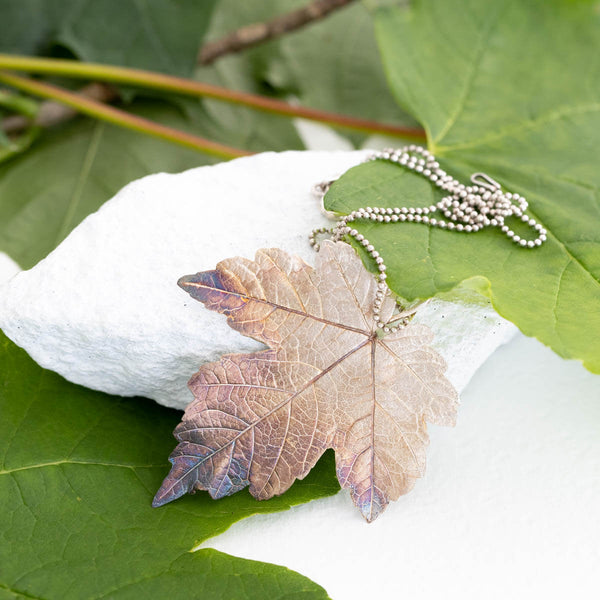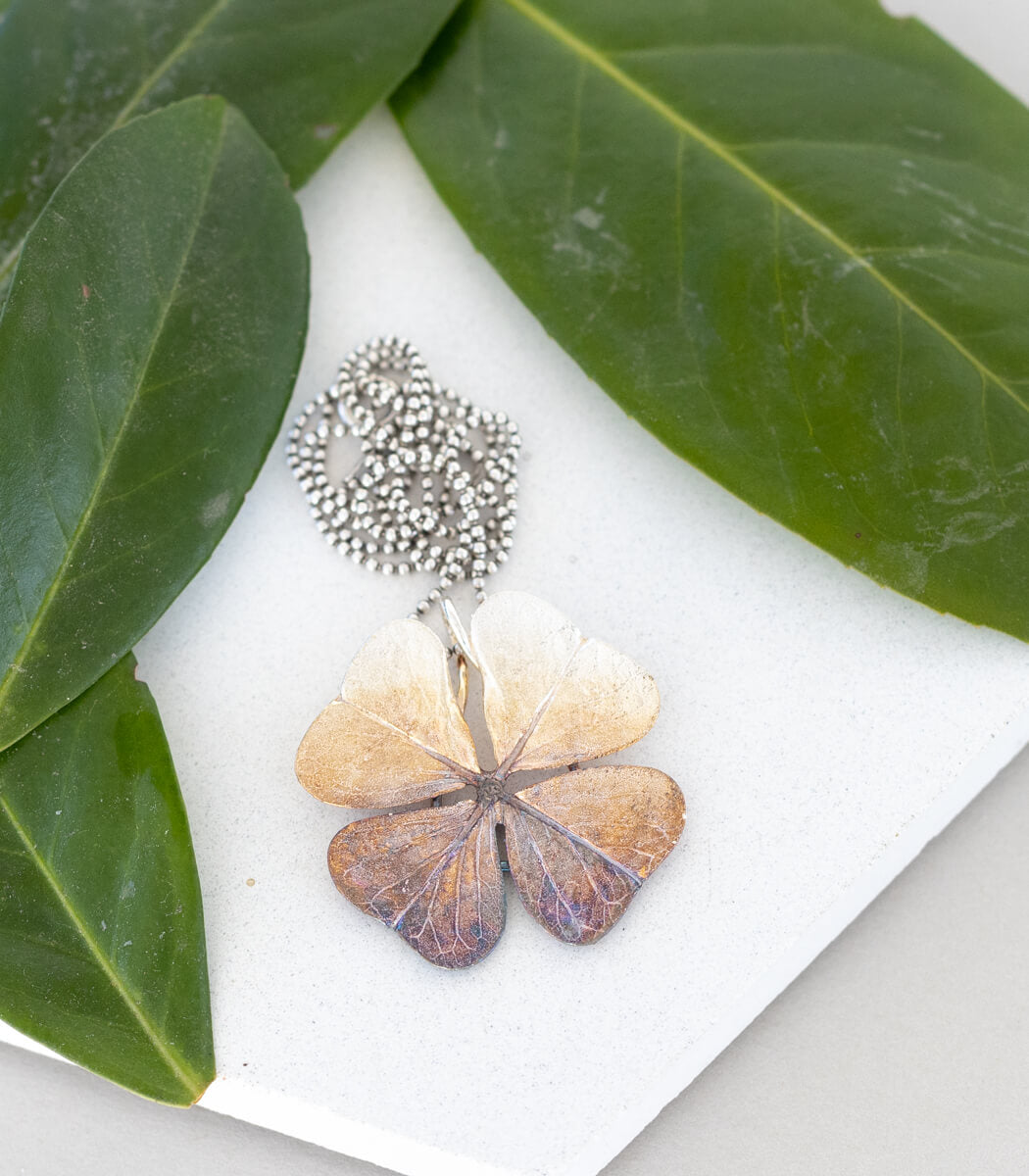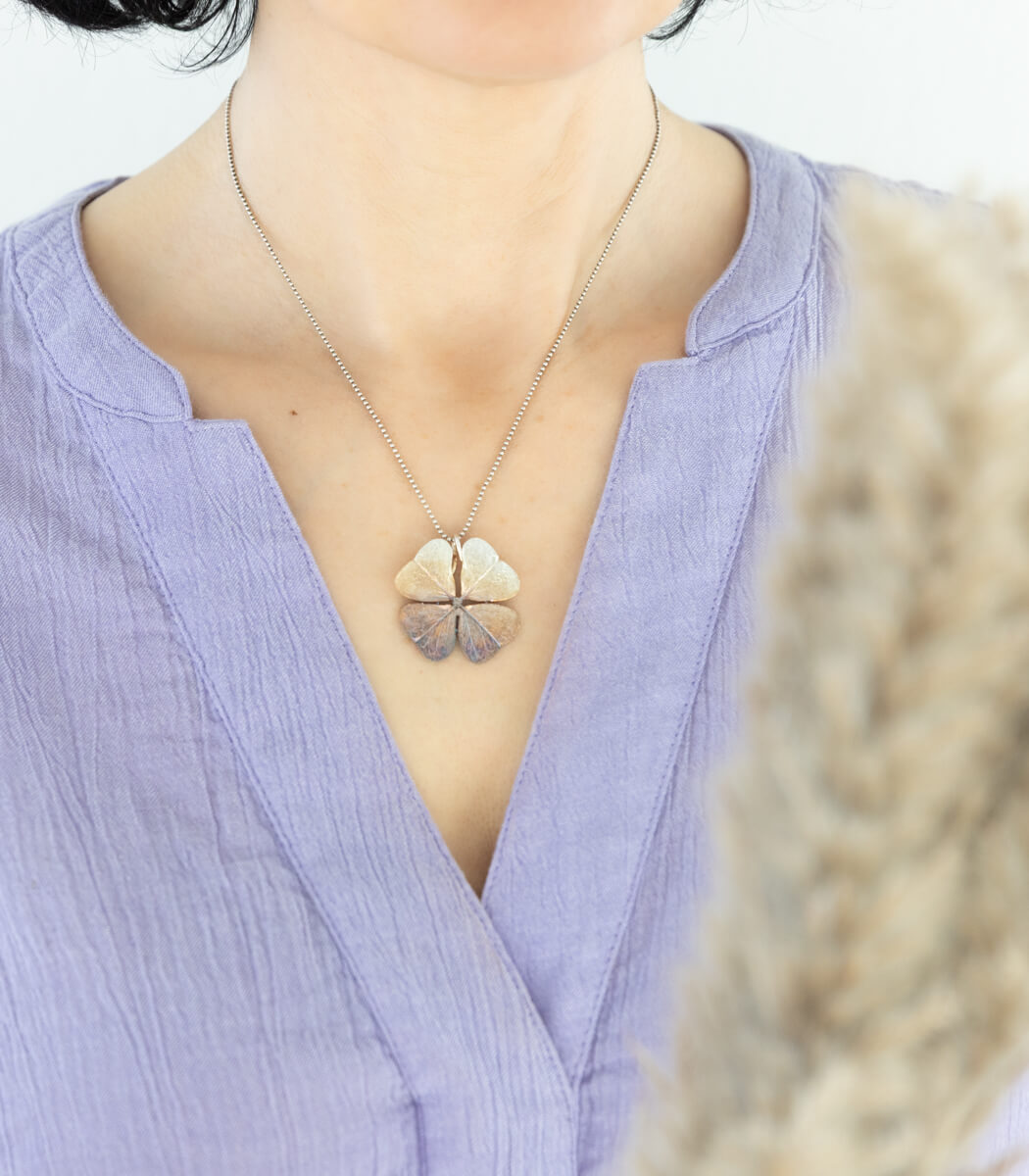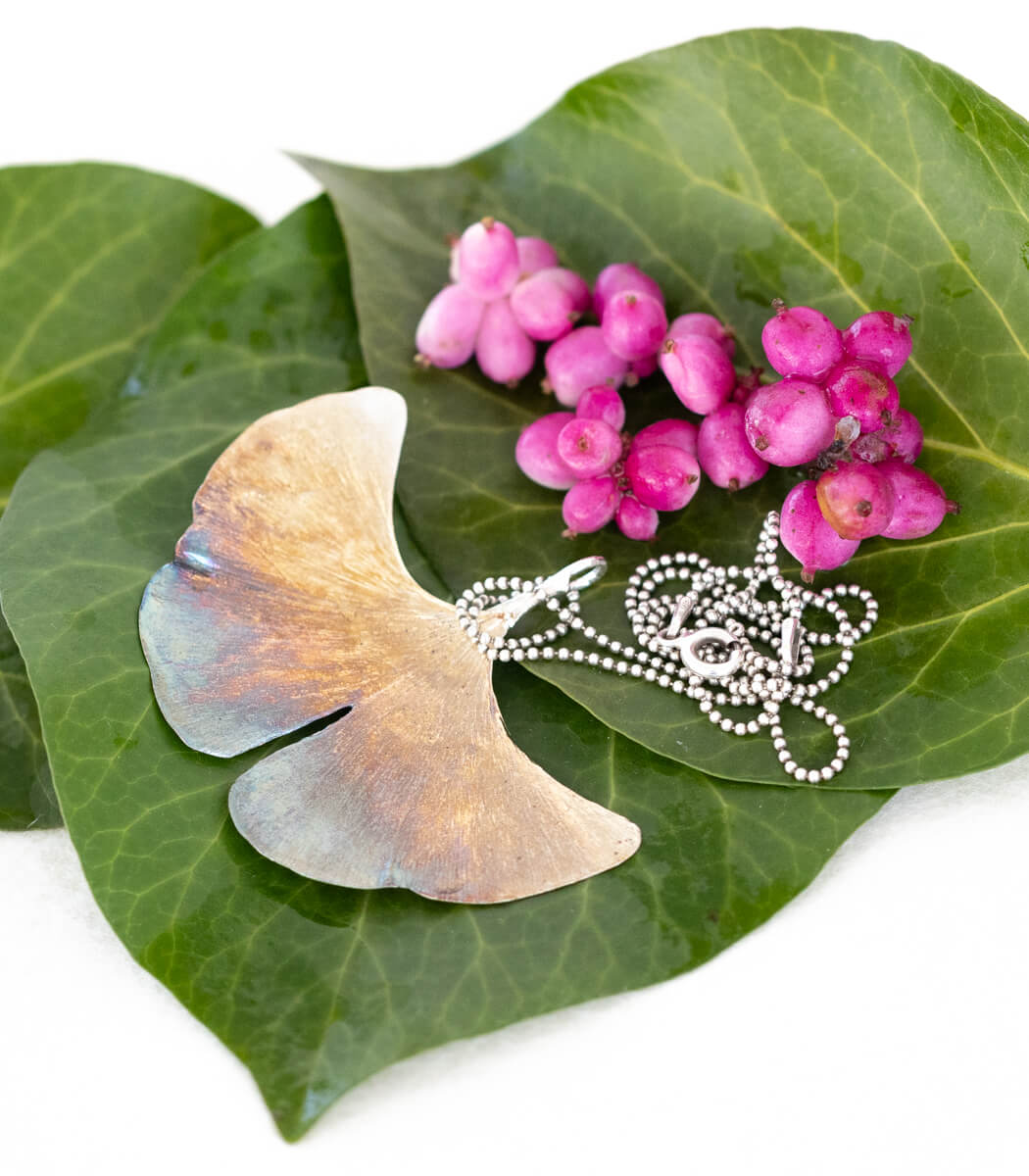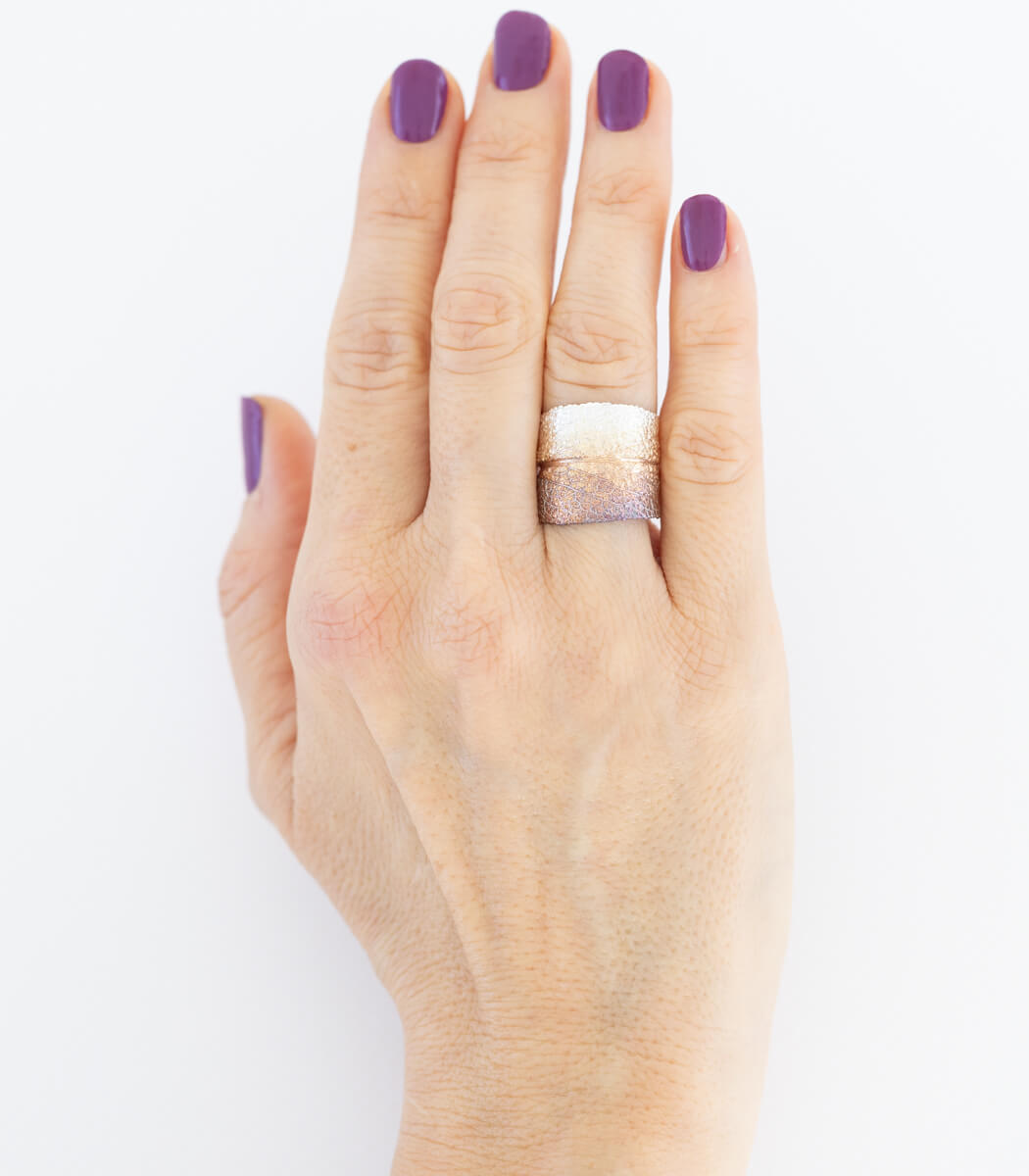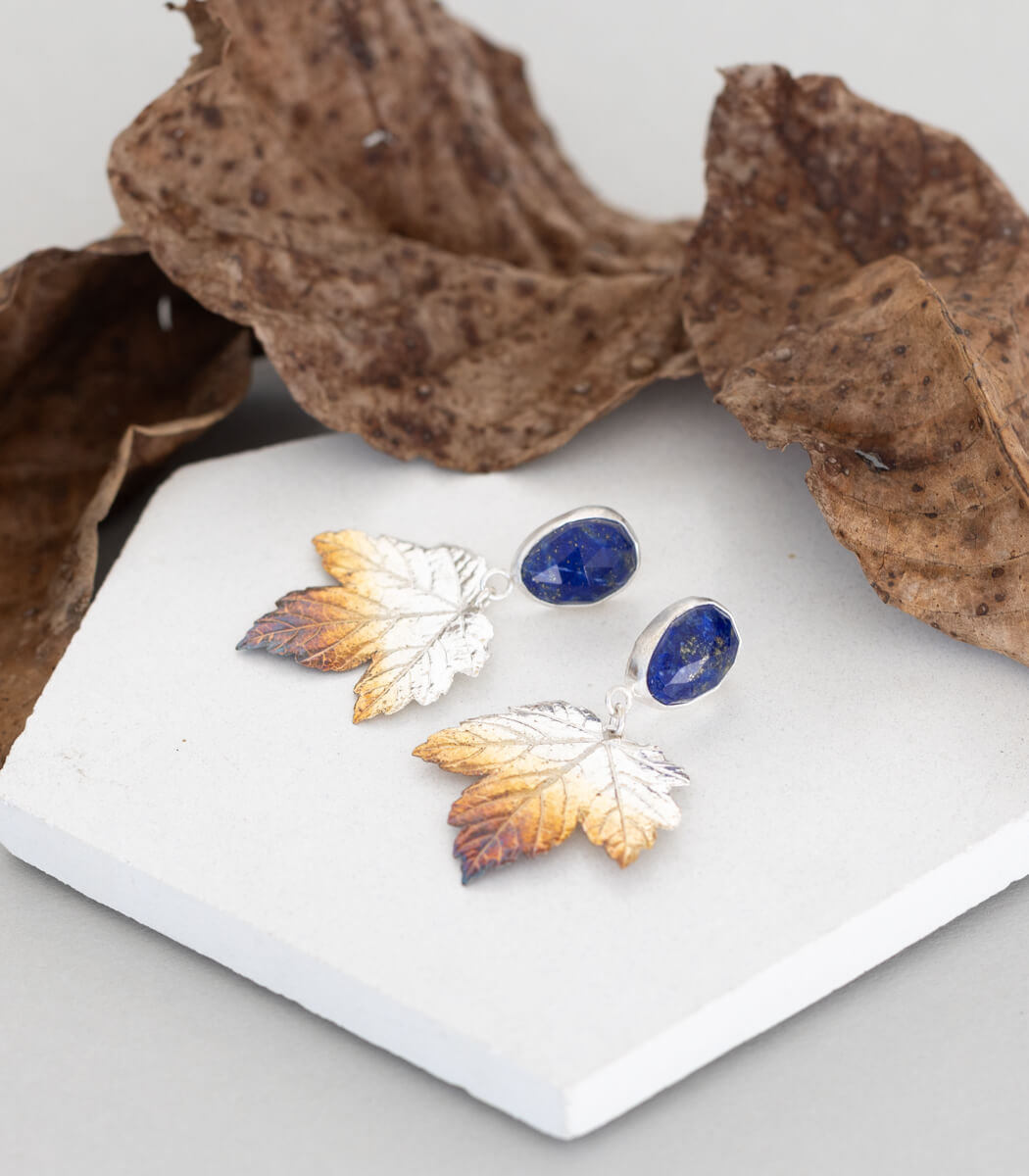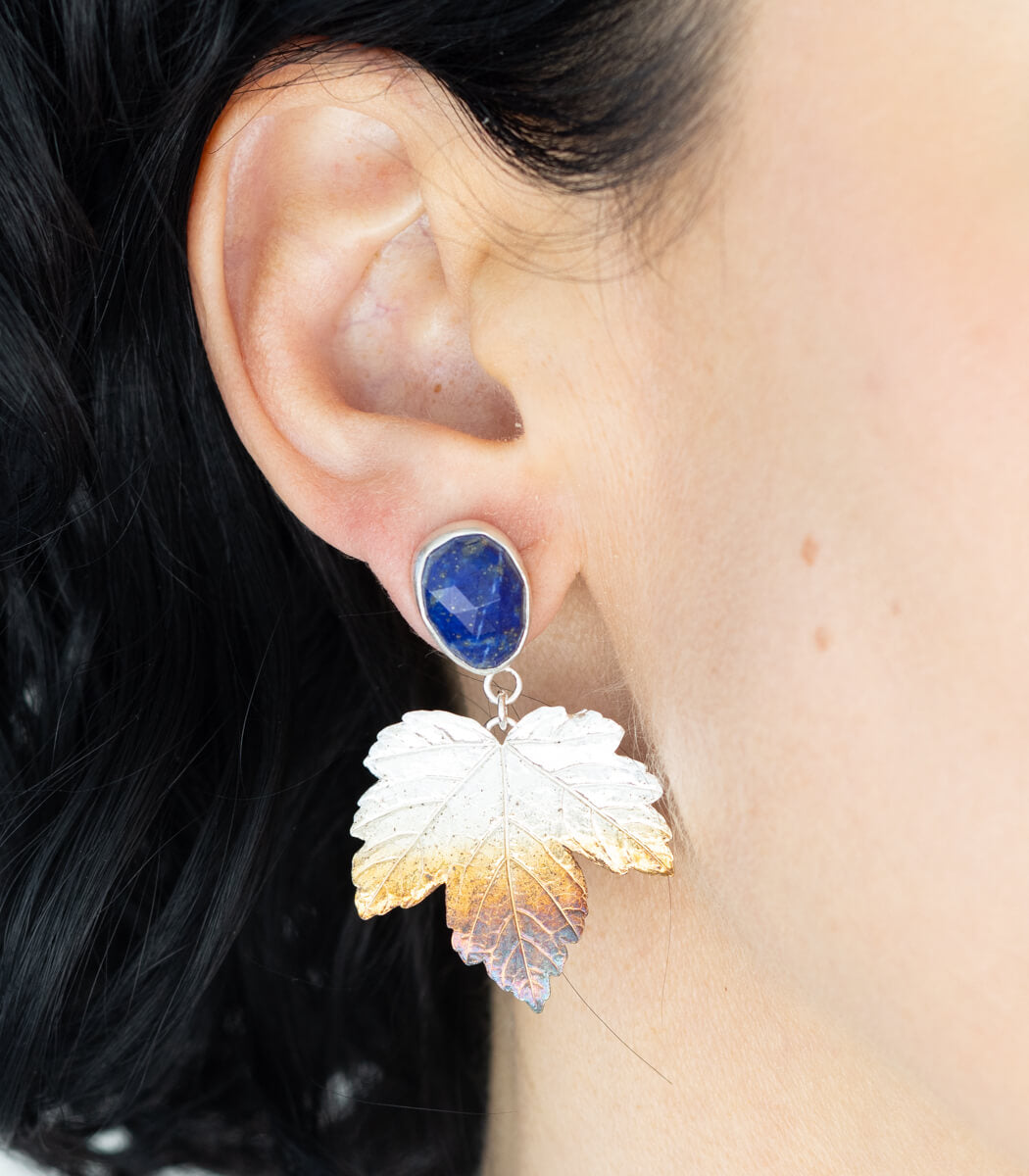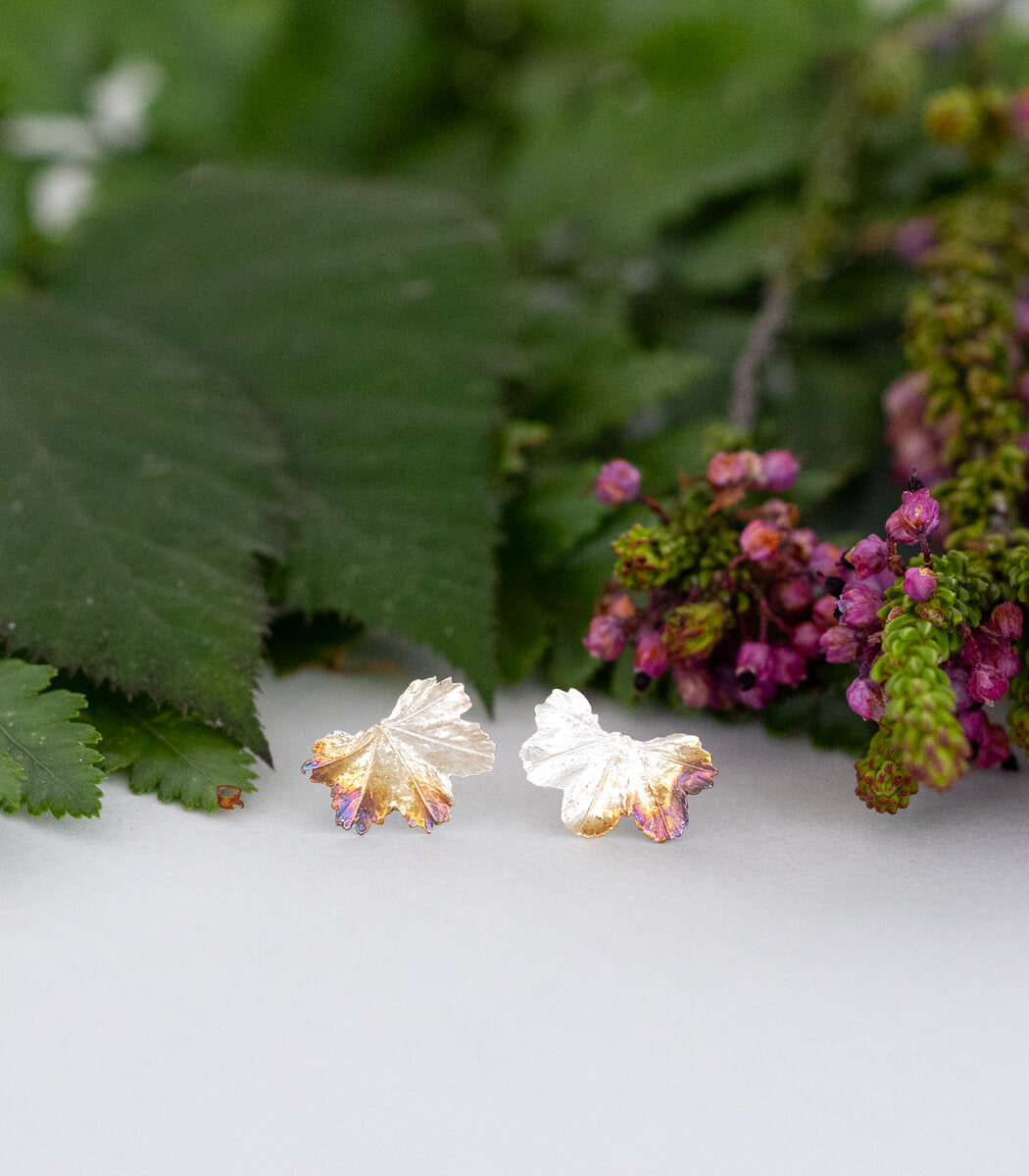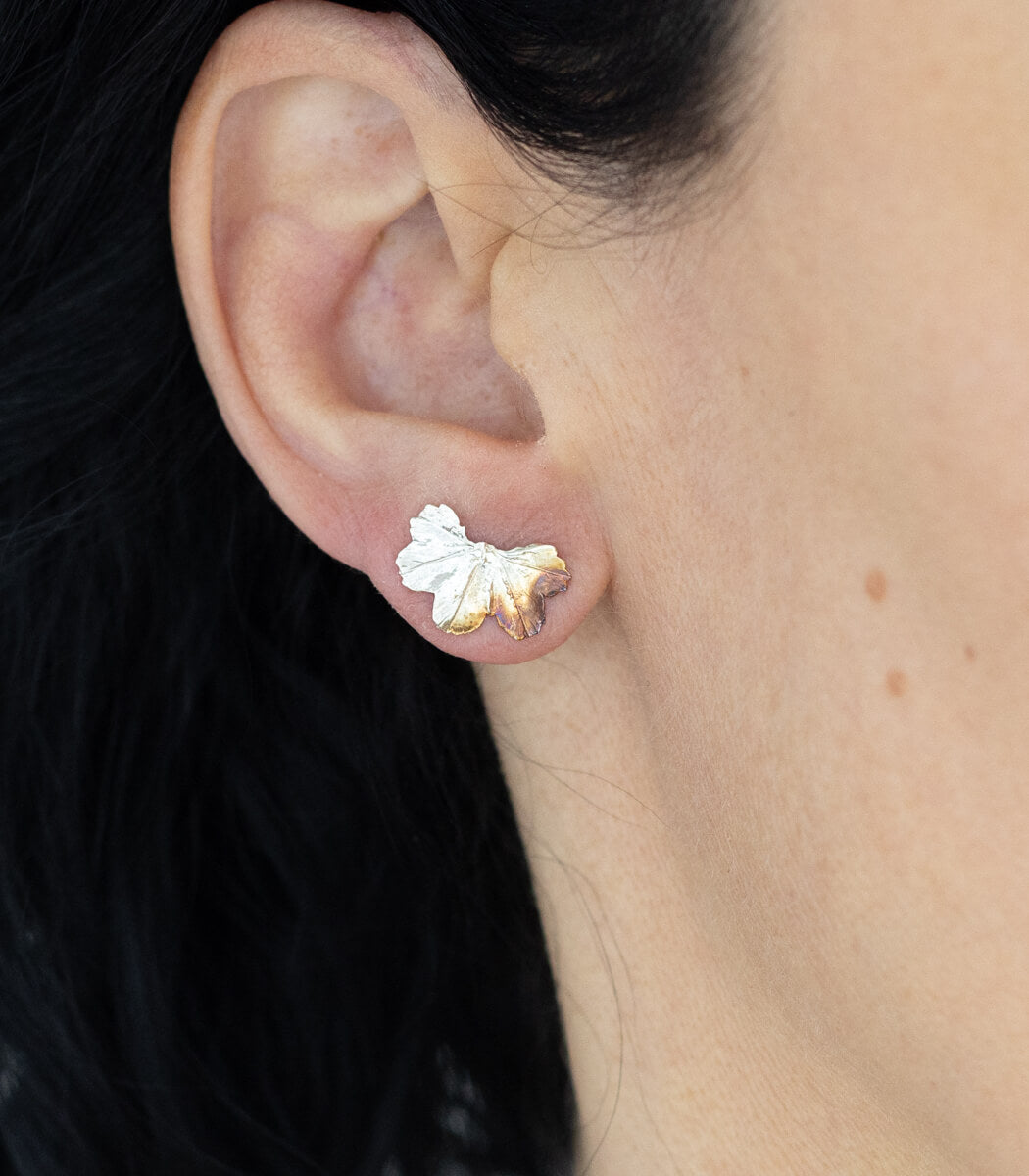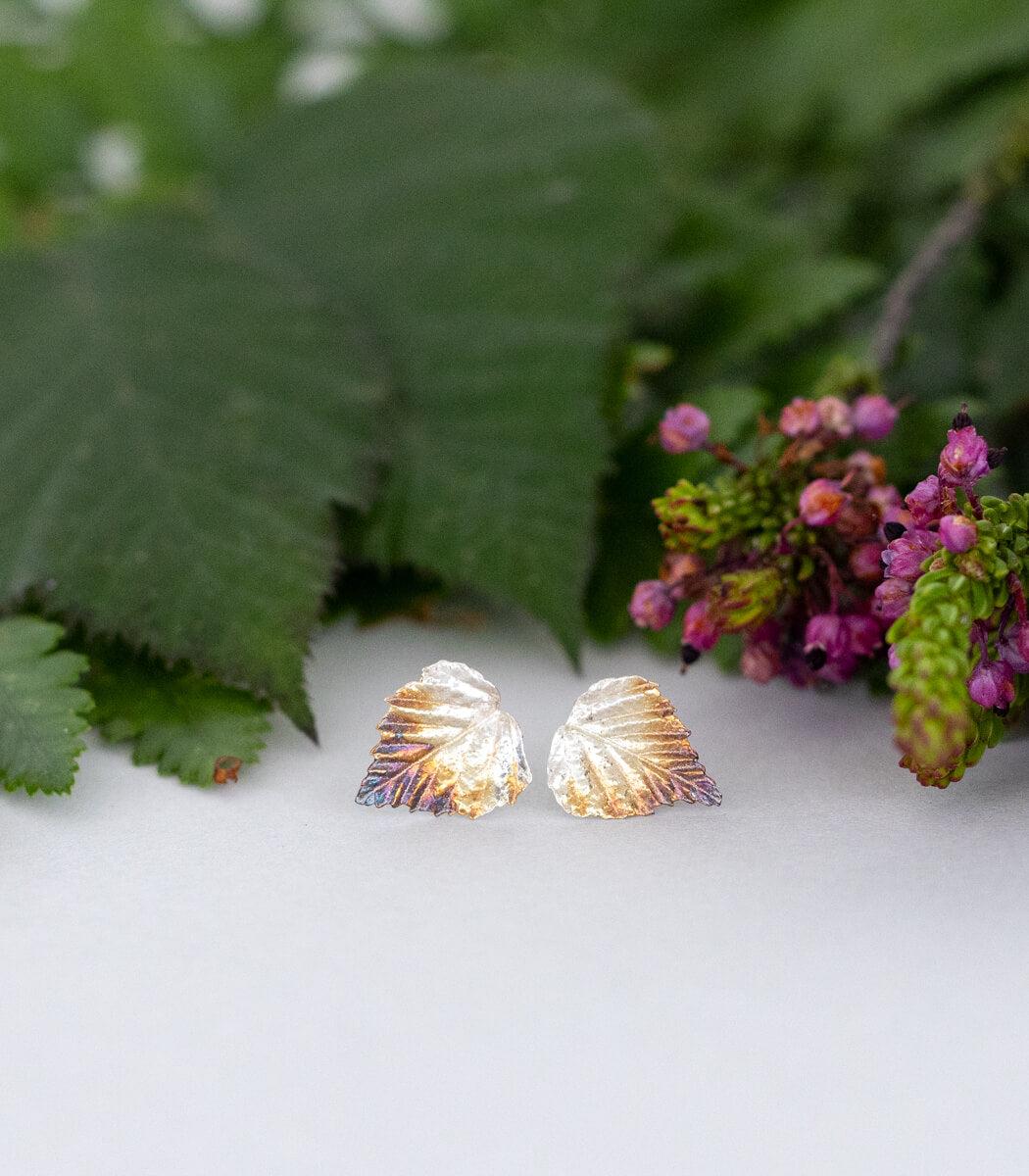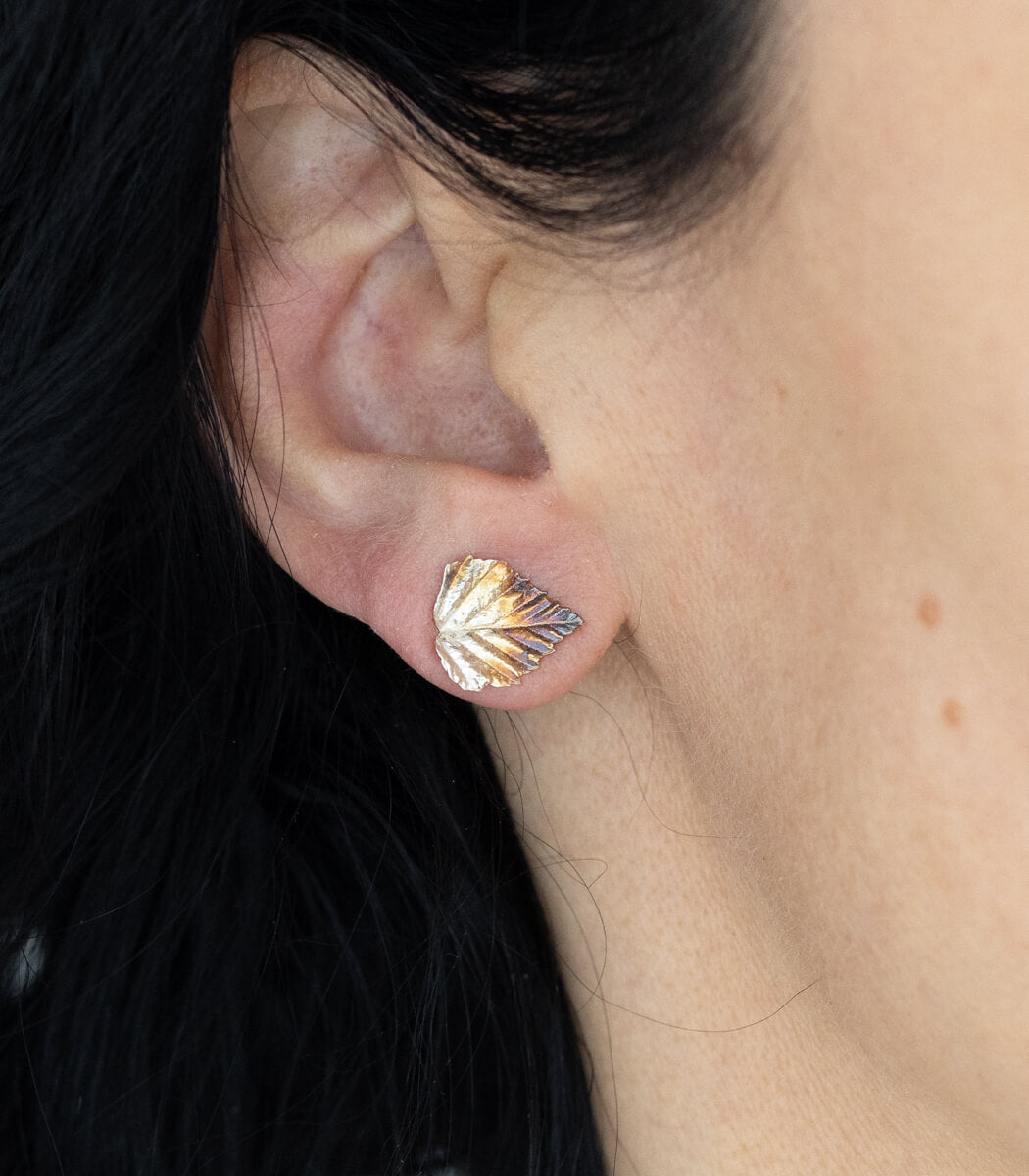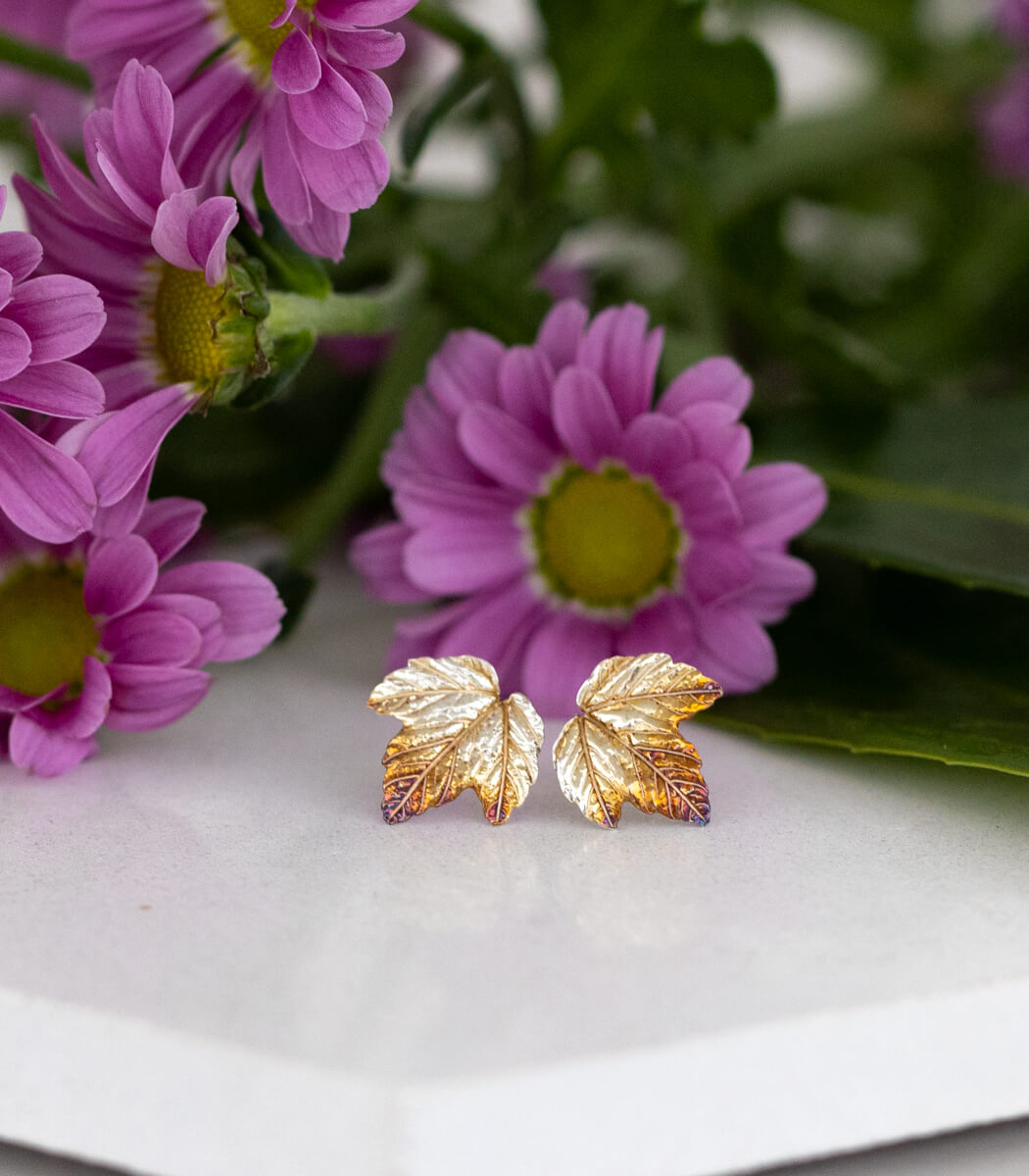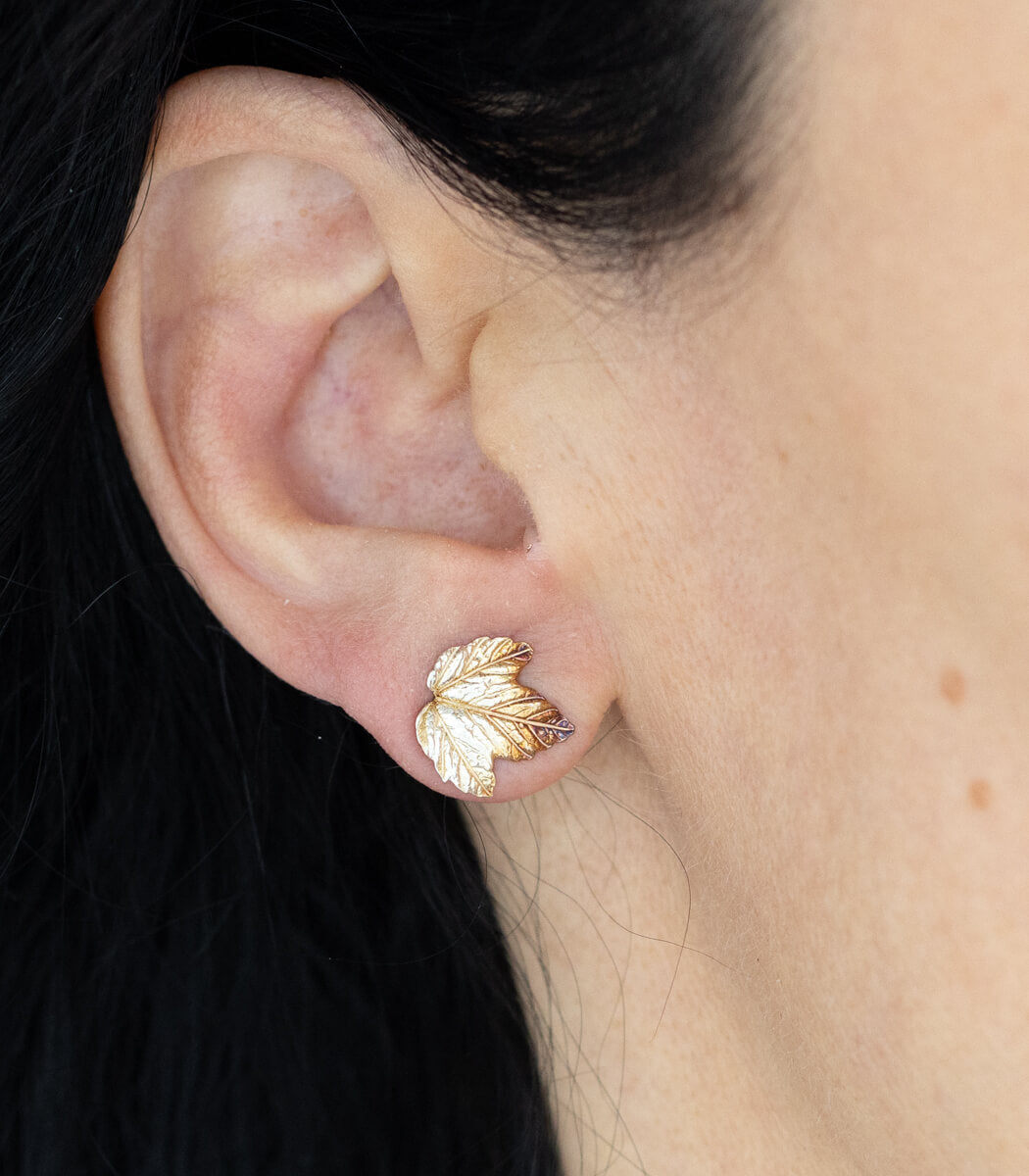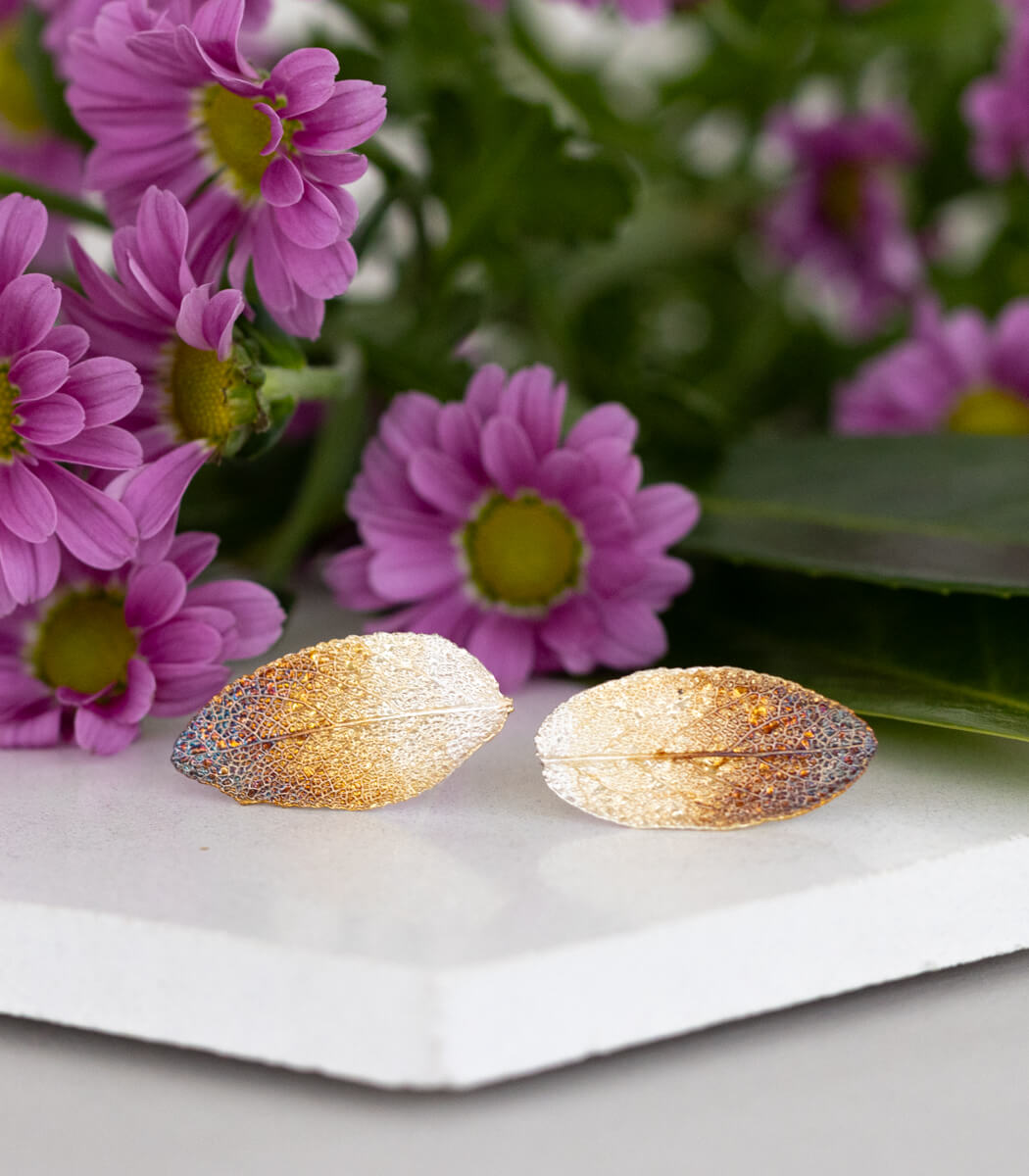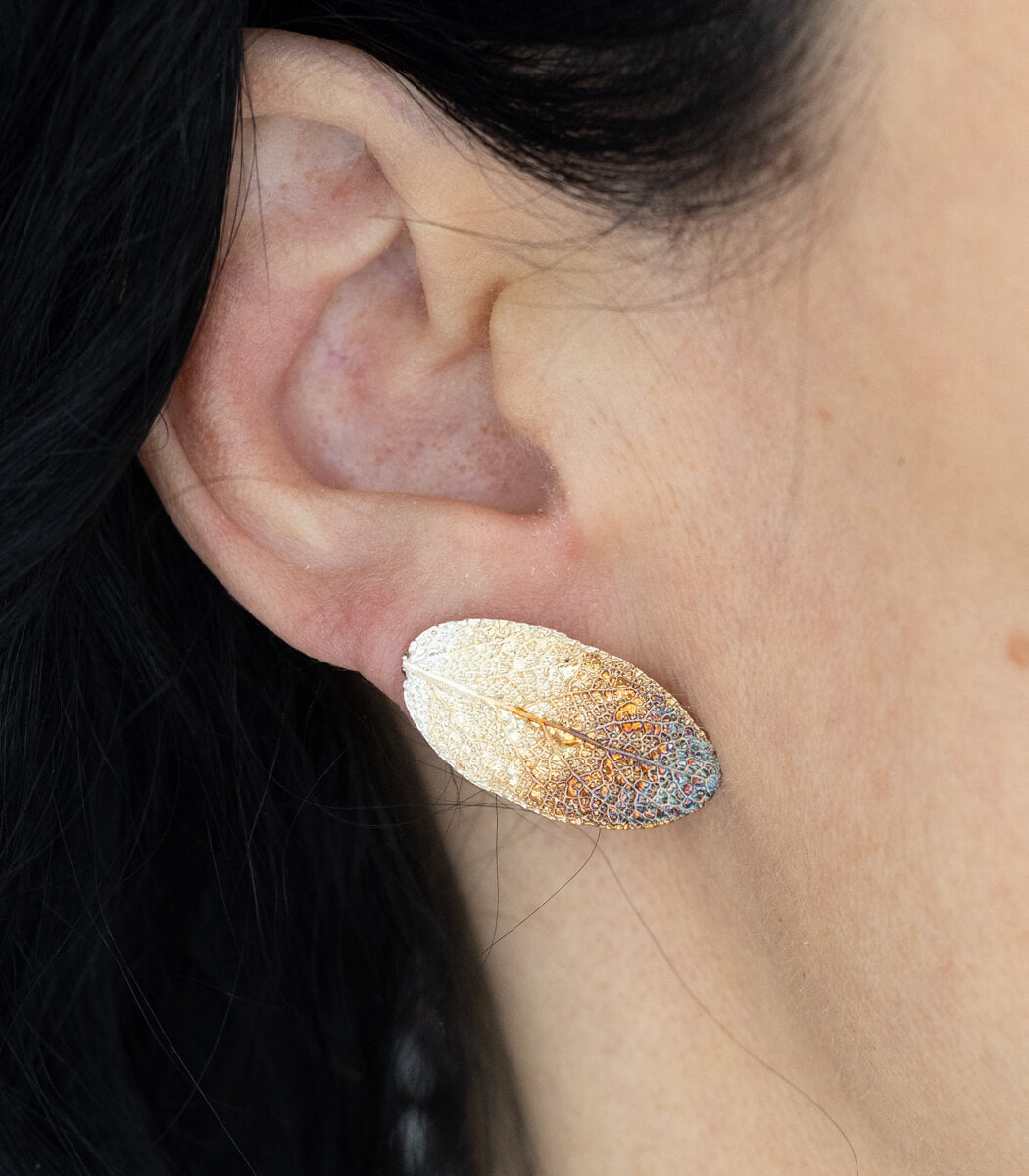
The unique meaning of the maple leaf
The maple is a special tree that you can't miss: this large, strong deciduous tree has a beautifully light, smooth trunk and a light, green crown in summer. In autumn, it shines in the most beautiful red and yellow tones that can be seen from far away - no oak , no linden or no beech can compete with this splendour of colours!
The unique meaning of the maple leaf
But there are even more reasons why I love using the maple leaf for my earrings, pendants and bracelets, and I want to tell you about them today.
The maple has always been a particularly powerful tree that plays an important role in many cultures, in medicine and even in healthy nutrition.
From Asia to North America
Here in Europe, we are most familiar with the sycamore maple and the Norway maple. The field maple, which is called "Maßholder" or "Harbunken" due to its shrub-like height, may also be familiar to some of you. We recognize the thick trees by their light bark and the large, five-segmented leaves that make a maple tree so unmistakable. But did you know that there are up to 200 types of maple in the entire northern hemisphere, from China and Tibet to Germany and France and Canada? And for each country, this light, strong tree has its own special meaning.
You've probably heard of Canadian maple syrup before: Canadians are so proud of their natural sugar that they have incorporated a red maple leaf into their national flag! And if you've ever visited their country, you might have had the pleasure of tasting the fantastic pancakes with maple syrup - an absolute treat for the palate!
In Asia, the maple tree is a symbol of official dignity and thus stands for a sense of duty and respect. Many types of maple are only found in China, making it a tree of diversity and individuality.
Here in Europe, maple leaves have a long tradition in protective magic and natural medicine. In Croatia, for example, it was believed that someone who had to walk at night should take a maple branch with them and thus be protected from all evil. But there are even more ancient European customs that revolve around the maple tree and whose origins obviously go back deep into the past.
Maple leaves as a symbol of the connection between heaven and earth
We know that the Celts worshipped many trees. The maple tree was one of them: the white bark of the trunk and the five-part leaf, reminiscent of a human hand, were seen as a sign of the connection between the world of the gods and humans. It was possible to seek protection in the shade of these trees, but also to gain great insights. However, since the will of the gods remained hidden from humans according to Celtic belief, the spirit of the maple tree was also considered unpredictable and willful.
Maple leaves as protective bringers
From Celtic tradition, maple leaves have been preserved as protective symbols in some customs, some of which are still used today, especially at the summer solstice – which the Christians turned into St. John’s Day.
I have collected some examples for you here:
There is a tradition in former West Prussia that on St. John's Day, maple branches were picked and hung over house and stable doors to protect against lightning strikes and evil spirits. In some places, maple tree branches were also used to surround potato fields. This was to keep away voles and other pests that would otherwise have attacked the precious harvest.
In Alsace, it is believed that maple leaves drive bats away from houses. Here, too, the branches are attached above doors and windows.
In Bavaria, an old farmer's rule says: If the maple leaves are thick, there will be a good harvest. So an experienced farmer only needs to pick up a leaf from this tree in midsummer to plan how good his harvest will be.
And throughout the German-speaking region, some of the older people still know the custom of using nails made of maple wood for the doorsteps of the stables, as the magic of the tree is said to protect the animals from evil spirits and their diseases.
When you look at all these customs, you can see the deep belief in a mighty tree that could provide protection from threats and hunger. Of course, we don't necessarily believe in ghosts and witches anymore, but who knows whether the leaves might not prove to be helpful after all? Recent scientific tree science has already revealed all sorts of amazing things. For example, we know that the essential oils in the leaves and needles of forest trees have a positive effect on irritated minds and can even help with colds simply by inhaling them. Maple leaves have a very unique, nutty smell, and maybe that really does keep some pests away - who knows?
The importance of maple in nutrition and naturopathy
Eating maple leaves? Yes, I'm serious! Young maple leaves not only look pretty, but are actually healthy too: They contain plant protein and important trace elements such as calcium and magnesium.
You can cook them like spinach as a vegetable side dish, for example, or use them to make a healthy leaf salad. With water, salt and spices like caraway or juniper berries, you can even ferment maple leaves in a pot like sauerkraut, giving you an inexpensive and healthy herb that will last all winter. This is how our ancestors did it, especially in times of need when food was scarce.
Hardly anything is known today about the healing powers of maple leaves. I find that strange, because the large leaves are full of healing substances!
The anti-inflammatory effect of maple leaves was already known in ancient Egypt, as we know from tradition. And the famous medieval healer Hildegard von Bingen also described the use of maple leaves to treat injuries. The leaves were picked at Midsummer and cooked into a paste that was rubbed onto the wounds.
But collecting and drying maple leaves is also worthwhile: a tea made from them, for example, is effective against fever.
Maple compresses not only help with inflamed wounds, but also cool swollen legs and knees and relieve the itching from mosquito bites. And anyone who has ever gone on a long mountain hike in the summer and returned home with tired feet, or sat by a lake in Scandinavia in the evening and was literally eaten alive by mosquitoes, knows how beneficial this can be!
The maple tree also has a protective and healing effect in the truest sense of the word.
My maple leaf decoration for you
Because of all these wonderful properties, I love using maple leaves for my leaf jewelry. Of course, I only use the young and small leaves for my maple leaf jewelry, before they become large and huge specimens. I use real maple leaves for the earrings, pendants and bracelets. You can wear them discreetly as silver stud earrings and still go through the day sparkling. And who knows whether they might also protect you from unpleasantness and bad thoughts? I would certainly wish that for you from the bottom of my heart.
I also use other leaves such as birch, ginkgo or sage in my leaf jewelry. If you're curious, take a look here.

